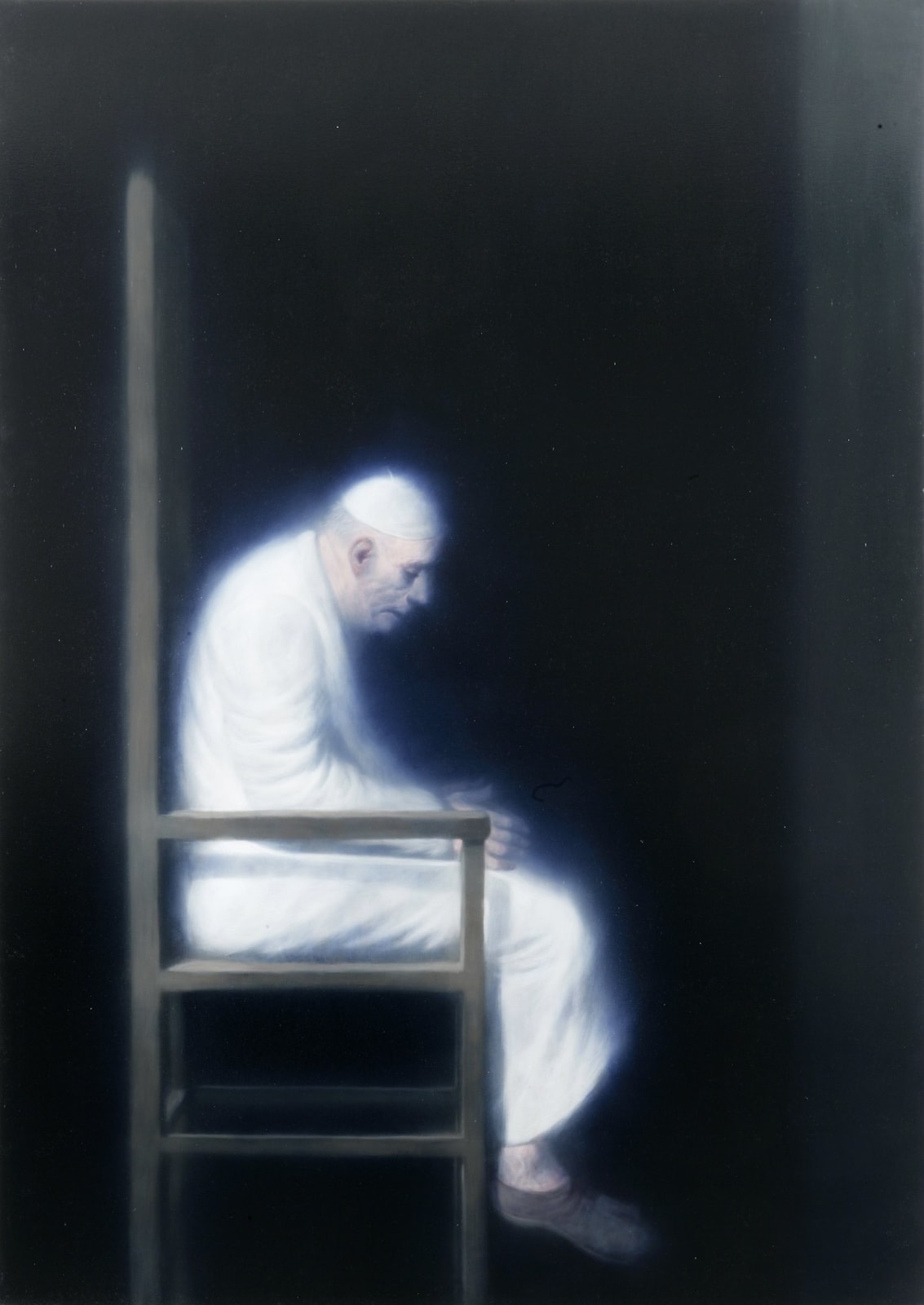Overview
In 2002, renowned Scottish artist Ken Currie (b. 1960) was commissioned by the Scottish National Portrait Gallery to paint Three Oncologists, depicting prominent cancer specialists Professor Robert Steele, Professor Sir Alfred Cuschieri, and Professor Sir David Lane. In studying his subjects, Currie was told by Lane that people saw cancer as “a kind of darkness, and their job is to go in there and retrieve people from it”. Currie later reflected that “every picture has this key, you’re just looking for that thing that will unlock the image, and that phrase was enough to unlock the thing for me.”
It was this project that drove Currie to explore the history of commissioned portraiture, especially works held in museum collections. Currie found that the majority of subjects painted by the great masters were those of noble birth rather than figures who had sought to improve the world.
In response, during the mid-2000s, Ken Currie's oeuvre became a rebellion against the idea of traditional portraiture. His painting Seated Figure (2005) is one of the first pieces in what would become a career-defining body of work, later titled Immortality. A series of imposing paintings of fictitious power figures, these works can be viewed as the artist's meditation upon the nature of portraiture itself. While working on Immortality, Currie was heavily influenced by Spanish painters Diego Velázquez (1599-1660) and Francisco de Goya (1746-1828), particularly drawing on Velázquez's dark and grand interior compositions and his presentation of the relationship between artist, sitter, and viewer.

Ken Currie
84 x 60 in
Currie’s subjects, while contrived, are of a caste found in traditional commissioned portraiture, but Currie is not reliant on ingratiating his sitters. Subverting their sovereignty, Currie invites the viewer to a performance of players as they grasp for status, unaware of the depiction of their vulnerability. Engulfed by his chair, the Seated Figure is reminiscent of a pope, who would traditionally be portrayed with authority and dignity. Yet in Currie's hands, stripped of totems of wealth and power, this figure is exposed as decaying, fragile, and psychologically isolated.
Since 2002, Currie has only accepted two major portrait commissions: Nobel Laureate British theoretical physicist, Peter Higgs, in 2009, and Unknown Man (2019) of the forensic anthropologist Dame Sue Black, which is on view at the Scottish National Portrait Gallery, Edinburgh.
Ken Currie’s work is held in international public collections including Tate, London; National Galleries of Scotland; Imperial War Museum, London; Yale Center for British Art, New Haven; and the New York Public Library. On view until 23 August at An Lanntair in the Outer Hebrides, Scotland, is An Turas, an exhibition from Currie's acclaimed series The Crossing.


